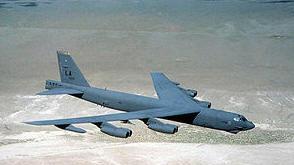|
|||||||||||||||||
|
|
|
|||
|
Boeing Clears The
Way For Plant 2 Site Restoration By Daniel Baxter |
||||
 |
September 24, 2011 - Boeing today took down the last
remaining steel structures that supported Plant 2 for
more than 75 years, making room for site restoration,
including development of five acres of wildlife habitat.
Most of the old empty buildings formerly known as U.S.
Air Force 17—but later called Plant 2 because it was
Boeing's second assembly site—were demolished this year
in conjunction with Boeing's commitment to environmental
improvements that are vital to the Duwamish Waterway.
The Duwamish River is the name of the lower 12 miles (19
km) of Washington state's Green River. Its
industrialized estuary is known as the Duwamish
Waterway. Now a new chapter begins A half mile of shoreline will be restored to its natural habitat, a resting area for migratory fish, such as salmon, will be developed, more than 200,000 cubic yards of contaminated sediment will be excavated and replaced with clean material. |
|||
|
More than
85 percent of the building will be recycled or reused, including
steel beams, copper wiring, wood, and concrete and a new
stormwater treatment systems will operate at Plant 2 and North
Boeing Field to prevent recontamination of the waterway.
"We are
committed to restoring habitat along the Duwamish and conducting
environmental work that is vital to the ecosystem, nearby
wetlands, the Puget Sound and to our community," said Mary
Armstrong, Boeing vice president of Environment, Health and
Safety. "This is the largest planned habitat restoration in the
Duwamish Waterway, and it will provide an important ecological
resource to improve Puget Sound fish runs."
The plant
was important to the war effort in the 1940s, with 30,000 people
building at times up to 300 aircraft a month, including the B-17
and B-52 bombers. It was known as the birthplace of America's
airpower from World War II to the Cold War, and home to Rosie
the Riveter—women working then-nontraditional factory jobs. The Boeing B-17 Flying Fortress was a four-engine heavy bomber aircraft developed in the 1930s for the then-United States Army Air Corps (USAAC). Competing against Douglas and Martin for a contract to build 200 bombers, the Boeing entry outperformed both competitors and more than met the Air Corps' expectations. |
||||
|
||||||
|
|
||||||
 |
||||||
| ©AvStop
Online Magazine
Contact
Us
Return To News
|
||||||
|



